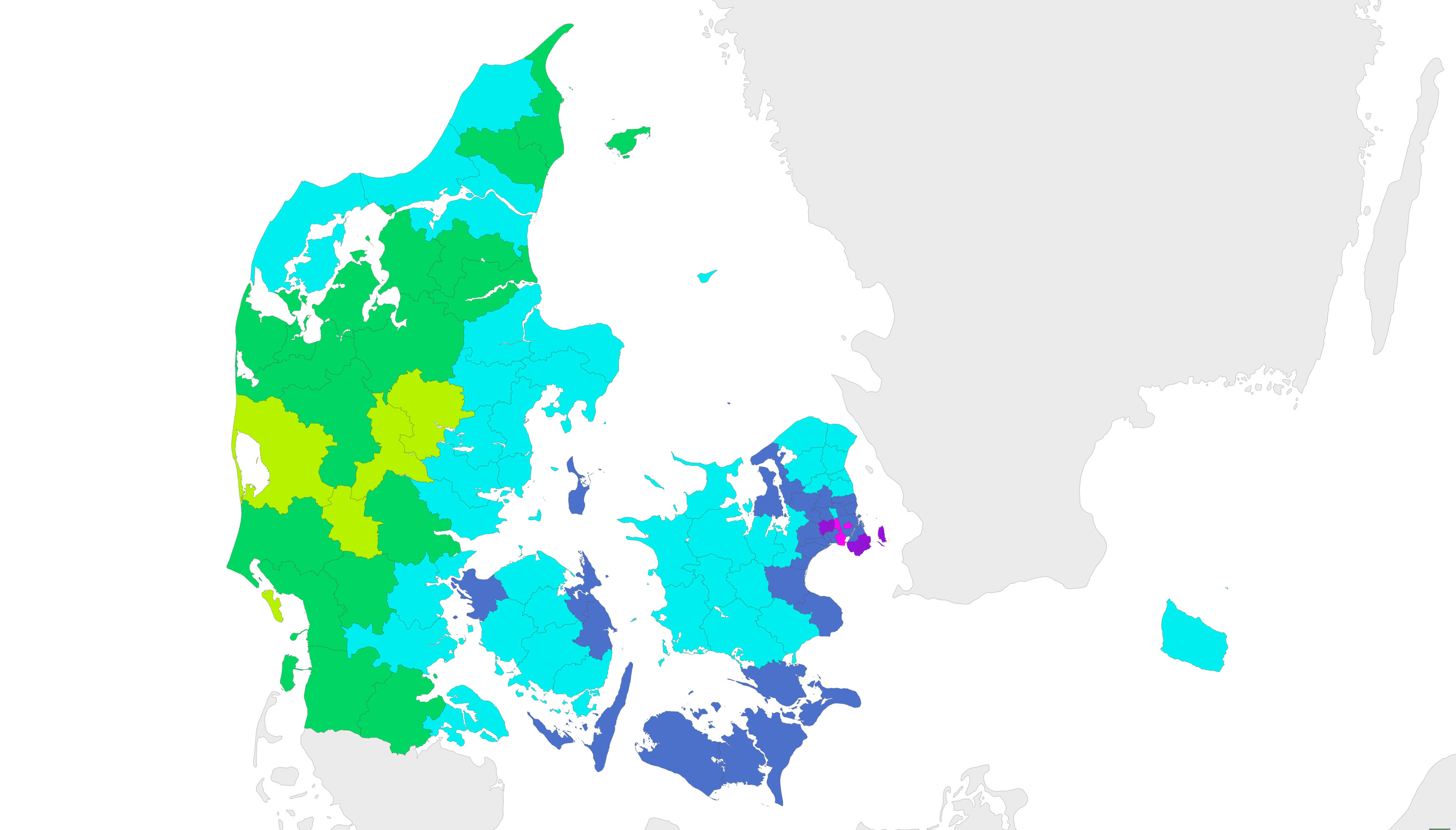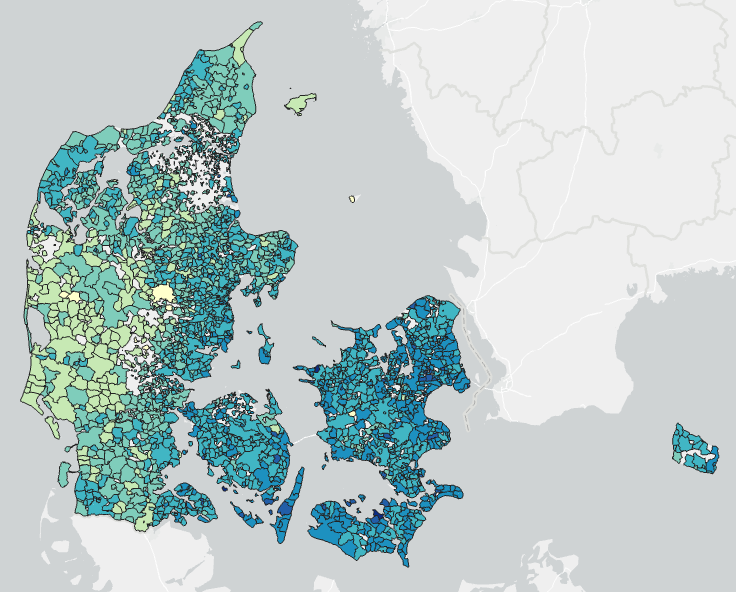Inland waters
Type of resources
Available actions
Topics
Keywords
Contact for the resource
Provided by
Formats
Representation types
Update frequencies
status
Scale
-

The map shows the hardness (dH) of the drinking water as an average of the hardness measured at the individual waterplants in 2010 in the municipalities. There can, however, be large differences in the hardness between the individual waterplant within the municipalities. In the average hardness calculations, the water production from the individual waterplants have been taken into acount to the extent that these data were reported by the municipality.
-

The map illustrates depth to the redox interface in meters below ground. The interface marks the transition from oxidised to reduced conditions in the subsurface. Based on approx. 13.000 observations of colour changes in sediment cores, a model has been developed describing relations between explanatory variables and depth to the redox interface. The machine learning method random forest has been used to develop the model. The map shows the best estimate of the location of the interface in a 100 m grid resolution. The applied method additional provides an estimate of the uncertainty. The method is described further in: Koch J, Stisen S, Refsgaard JC, Ernstsen V, Jakobsen PR, Højberg AL (2019) Modelling depth of the redox interface at high resolution at national scale using Random Forest and residual Gaussian simulation, Water Resour. Res., https://doi.org/10.1029/2018WR023939 Koch J, Stisen S, Refsgaard JC, Ernstsen V, Jakobsen PR, Højberg AL (2019) Nyt nationalt redoxkort i høj opløsning. In Tema: TReNDS. Vand & Jord, 26 (1), 26-29.
-

Map showing information about drinking water hardness (dH) at the level of water supply areas of public waterworks in Denmark based on quality-assured data, extracted from the national well-database Jupiter in September 2023. The hardness degree is based on the concentration of calcium and magnesium in the drinking water and has importance, for example, for the soap dosage when washing clothes: hard water requires more soap than soft water. Drinking water hardness may vary considerably from location to location and in time. Contact your water utility company to get the updated and precise figures.
-

Map showing the degree of nitrate retention in the subsurface and surface waters before they reach the coast calculated as an average for the period 1990-2010. Map production and model description are documentet in two reports (in Danish): National kvælstofmodel - version 2020, GEUS special report. Method report: ISBN 978-87-7871-551-7. Appendicies: ISBN 978-87-7871-552-4. Den Nationale Kvælstofmodel version 2020 er beskrevet i: National kvælstofmodel - version 2020, GEUS specialrapport. Metode rapport: ISBN 978-87-7871-551-7 Bilag: ISBN 978-87-7871-552-4. Reports are available from the GEUS website.
-

This map is the first national map showing the depth in meters to the uppermost redox interface in sediments of Quaternary age. The redox interface indicates the transition from the oxidized to the reduced geochemical environment in sediments. The redox interface was identified according to the colors of the sediments in 11,999 wells and is shown for 1x1 km grid-cells. For grid-cells with multiple site information, the depth to the redox interface is indicated by an average value. For grid-cells without any field information, the depth of the redox interface was established based on information about 1) geological setting, 2) morphology, 3) depths to redox boundaries at nearby field sites, 4) GEUS surface geology map, 5) topography, and 6) the pre-quaternary surface. The method for this first national redox-map and the data used is described in GEUS report no. 93 (2006) entitled Beregning af nitrat-reduktionsfaktorer for zonen mellem rodzonen og frem til vandløbet. Data og metode for 1.generationskortet (in Danish). The Redox map is also described in Vand og Jord (2011) 18: 37-39 (in Danish).
-

The chorus shows drinking water areas in the categories: · Areas with drinking water interests (OD) · Areas of special drinking water interest (OSD) Areas of special drinking water interest (OSD) have the highest priority for drinking water. Within these areas (as well as in extraction catchments for public waterworks), the fee-financed groundwater mapping is carried out in accordance with the Environmental Objectives Act, § 8a. It is also within these areas that action plans are drawn up according to Chapter 3 of the Water Supply Act.
 Geus Geonetworks metadata catalogue
Geus Geonetworks metadata catalogue